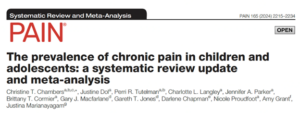
ChildKind President and Founder, Dr. Neil Schechter, spoke at a webinar recently on communication tips and ideas about how to make the conversation about chronic pain successful when communicating with children and families.
Watch the webinar here: https://childkindinternational.org/childkind-webinar-series/



 SPPM 13th Annual Meeting
SPPM 13th Annual Meeting